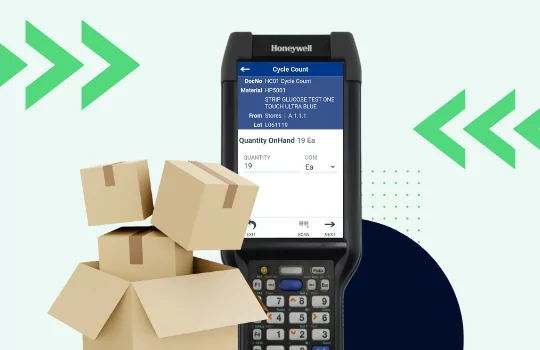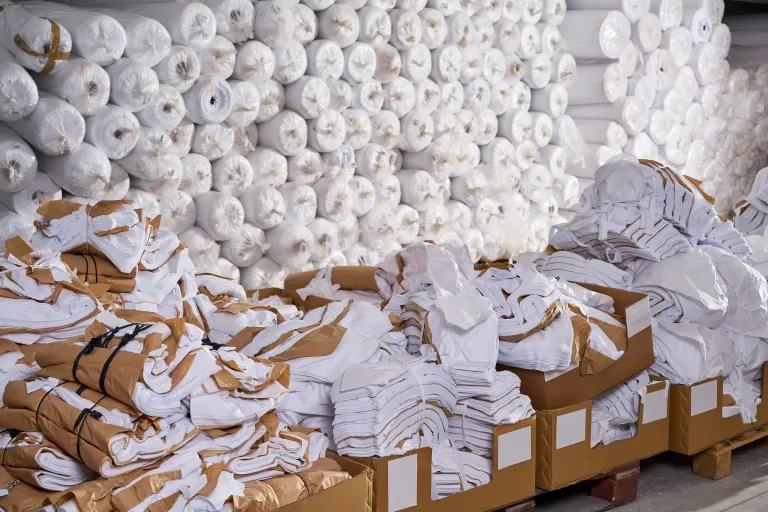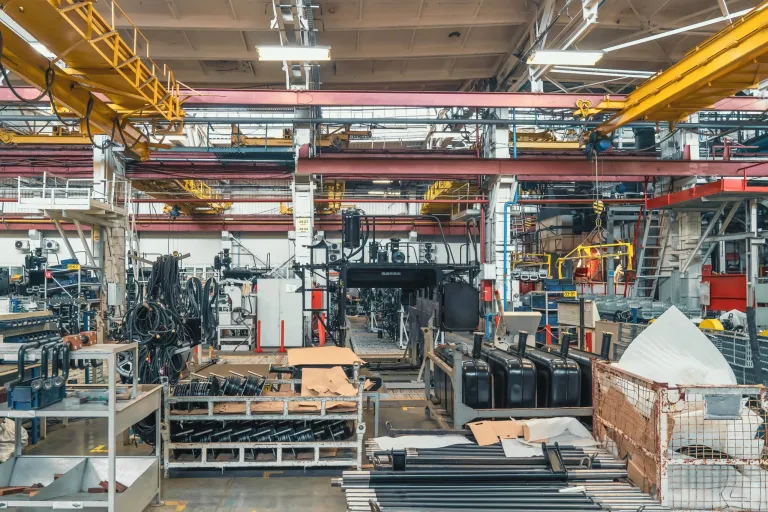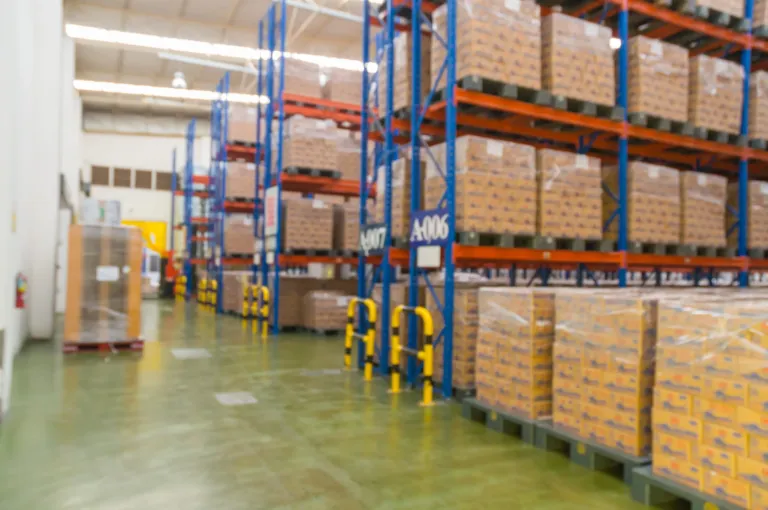Understanding the Four Types of Inventory
Key Takeaways:
- Knowing the four types of inventory is critical: raw materials, WIP inventory, finished, goods, and safety stock.
- Monitoring all types of material across the supply chain can heighten visibility and eliminate costly mistakes.
- Mobile inventory technologies can help you better understand and track inventory movements, maintain optimal stock levels, and reduce overstocking.
It’s crucial for companies to manage their inventory efficiently. Although many types of inventory exist, this article will focus on four main types: raw materials, work-in-progress inventory, finished goods, and safety stock.
Knowing the four types of inventory is important, yes, but so is understanding why it’s important to track each inventory type, especially for manufacturers.
In 2022 alone, the worldwide cost of inventory distortion was estimated at $1.9 trillion. When inventory across the supply chain is not visible and streamlined, manufacturers stand to lose time and money. Using technologies like mobile inventory is one way to enhance oversight and efficiency in stock management.

The Comprehensive Guide to Mobile Inventory Tracking
1. Raw Materials Inventory

Company warehouses don’t just house finished products. Some manufacturers use distribution centers to store raw materials like produce or flour for their production lines.
Raw material inventory acquisition and storage is an essential component of any inventory strategy. For instance, acquiring crops, that respond based on weather conditions, can lead to cost increases, supply chain adjustments, and even delayed shipping.
Warehouses must monitor raw materials. Shortages or stockouts can lead to stoppages in the production line, impacting delivery schedules, customer service, and revenue.
Having reliable information about stock levels and consumption is a baseline requirement to prevent interruptions on the shop floor.
Inventory management software solves these challenges. For larger companies that use an ERP system, mobile inventory solutions with built-in barcode scanning can ensure extremely high levels of accuracy, ensure extremely high levels of accuracy, speed, and efficiency in these areas.
2. Work-in-Progress Inventory

WIP inventory refers to a company’s partially or semi-finished goods in the process of being made. Often, WIP materials go through a process of preparation, mixing, and finishing, or equivocal stages.
While work-in-progress inventory may be widely used, keeping track of it is difficult. Think of an ice cream manufacturer that transforms raw ingredients like sugar, milk, and chocolate chips into finished goods—ice cream.
How do you track the consumed materials once they are mixed into WIP inventory?
While inventory control systems provide some oversight, tracking material movements through the phases of production necessitates automated data collection for visibility.
For example, employees using mobile barcoding devices can quickly update inventory progress at any point in the product lifecycle. These checkpoints help track material movements through the phases of production, necessitating dedicated manufacturing traceability software that enables automated data collection for visibility for raw components, WIP materials, and even completed products.
This is especially relevant for process manufacturers, where intermediary materials are essential to the creation of a finished product.
3. Finished Goods Inventory
Once a completed product has been made, it becomes a finished good. These products are ready for sale.
For example, the ice cream you buy in the store is considered finished goods. It started as raw materials, the recipe mixed and made as various types of WIP inventory, then was finished, packed, picked, and shipped.
Finished goods must be closely tracked to ensure final delivery to customers. Technology helps keep tabs on stock so it doesn’t get lost or expire. Mobile solutions enhance inventory management in this area, enabling efficient pick, pack, and ship operations.
While finished goods seem self-explanatory, there are several types that warrant further explanation:
In-Transit Inventory
Finished goods that are being transported from one location to another in the supply chain are referred to as in-transit inventory. These items have been produced but are not currently sitting in a warehouse because they are “in transit” on a transportation vehicle.
Since in-transit goods are at higher risk of getting lost, misplaced, or misdelivered, it’s important to not lose sight of them as they travel to their endpoint. Many field mobility solutions exist capable of closing that oversight gap.

How Toyota created end-to-end tracking for in-transit inventory
Cycle Inventory

Inventory that moves quickly through the supply chain is called cycle stock. These are products that arrive from a supplier or manufacturing process and are almost immediately pushed out to customers.
Warehouse operations must be flexible and agile to respondents to the Digital Inventory Report noted fluctuating demand as a critical challenge impacting their operations.
Slow-Moving Inventory
Slow-moving items are the opposite of cycle inventory. These goods do not move quickly, as the name implies. When items stop moving at all, they become dead stock inventory. Deadstock refers to unsold products that are no longer in demand and are unlikely to be sold in the future.
Similar to dead inventory, stock that is no longer viable as raw materials or sellable as finished goods becomes obsolete inventory.
Electronics manufacturers often end up with chips or electrical parts that have reached obsolescence if they can’t effectively track or sell components. Food manufacturers must be vigilant about expiration dates on food ingredients and products. Expired food cannot be sold or scrapped and reused.
Slow-moving, dead, and obsolete stock can result from poor or changing market demand, overproduction, or inadequate inventory tracking software. Regardless, sluggish SKUs tie up valuable resources, draining the company’s bottom line.
4. Safety Stock Inventory
Safety stock inventory represents deliberate overstocking of materials to cover unpredictable market fluctuations.
Safety inventory may be created in times of low demand so manufacturers can continue production schedules without stoppages due to stockouts.
Reserve stock can also be anticipatory. Companies create large inventories for times of projected high sales. If a manufacturer expects a rise in the price of supplies or a future inability to obtain materials, they may want to produce as many goods as possible while conditions are thriving.
The reality is, safety or anticipatory inventory is often “just-in-case” inventory, collected out of fear of future shortages or market turns. What happens, however, is that safety stock sits on warehouse shelves much longer than other classifications, ultimately depreciating or going unused entirely.
Again, technologies like mobile software and automation are instrumental in preventing undue stock hoarding. As a result, businesses can reduce overhead and carrying costs, increase monitoring, and make better strategic decisions.

5 Ways to Reduce an Outsized Inventory
How to Track All Inventory Types

No matter what type of inventory a company uses, an inventory management system is needed to run efficiently. In the face of constant supply chain and cost pressures, a robust solution capable of ensuring real-time visibility, oversight, and control is ideal.
But with so many types of inventory—raw materials, WIP inventory, finished goods, and safety stock—each with its own needs, how can they all be tracked?
Many companies are finding that the right mobile inventory solution can not only solve these challenges but provide numerous benefits in cost-savings and performance, streamlining operations for future growth.
FAQs
1. How can effective inventory management reduce overall inventory costs for manufacturers?
Effective inventory management minimizes waste, reduces excess inventory, and helps maintain optimal inventory levels. This lowers inventory costs, prevents stockouts, and streamlines the production process, ultimately saving money and boosting cash flow. Successful inventory management ensures that operating supplies and indirect raw materials are utilized efficiently across the supply chain.
2. Why is it important to track work-in-progress (WIP) inventory during the production process?
Tracking WIP inventory ensures manufacturers maintain visibility over partially completed goods, preventing production bottlenecks. This allows for accurate forecasting, helps meet customer demand, and reduces the risk of too much inventory sitting idle. Managing inventory effectively during the production process also ensures the proper handling of process inventory and decoupling inventory, helping to optimize labor costs and reduce inventory turnover times.
3. What role does safety stock play in supply chain management?
Safety stock provides a buffer against fluctuations in customer orders and supply chain disruptions, ensuring continuous production. By maintaining this reserve, companies can avoid costly production delays and meet demand even during shortages. Safety stock and service inventory are essential parts of any inventory management strategy to avoid dead stock and maintain sufficient operating supplies.
4. How can mobile inventory solutions improve finished goods inventory tracking?
Mobile inventory solutions enhance visibility by allowing real-time tracking of finished goods inventory. This reduces the risk of transit inventory loss, improves stock control across multiple locations, and ensures goods inventory aligns with customer orders. Mobile solutions also track primary packing materials and indirect raw materials, ensuring better coordination in the packing process and reducing the risk of obsolete inventory.
5. How does tracking cycle inventory help manage customer demand?
Monitoring cycle inventory allows companies to quickly respond to shifts in customer demand by ensuring fast-moving products are replenished efficiently. This agility in inventory turnover helps increase sales, maintain customer satisfaction, and optimize the company’s balance sheet. Managing cycle inventory also aids in maintaining accurate inventory counts, tracking MRO inventory, and balancing economic order quantity to meet customer orders and avoid excess inventory.







